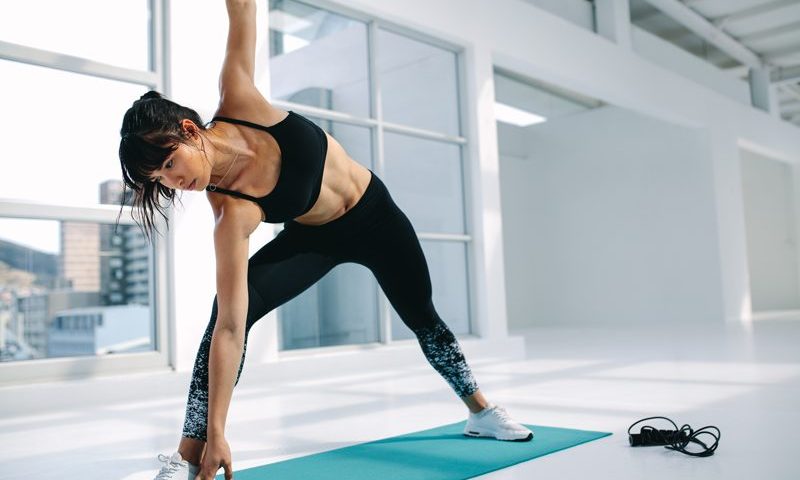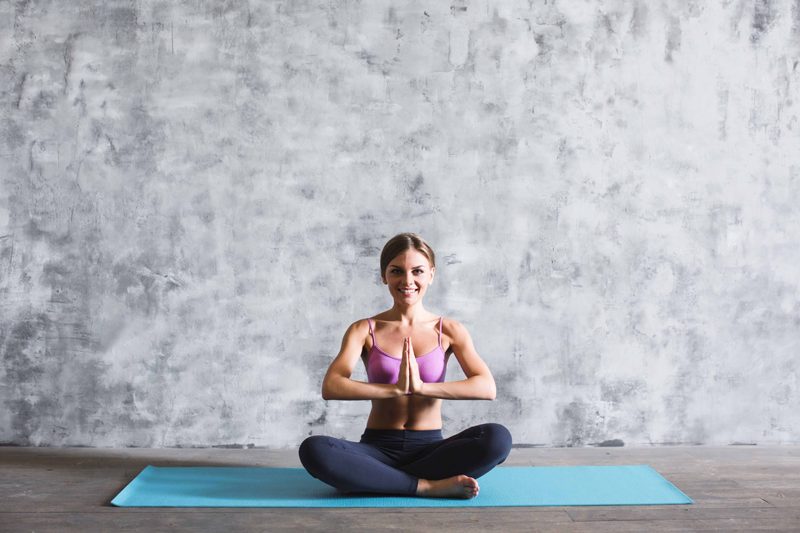
Simple Tips to Start Meditation
26th April 2019
Tips to Cultivate Self-Love
3rd May 2019How to Mix Fitness and Yoga

While traditional yoga has a host of benefits, it doesn’t necessarily replace a cardio workout. Thankfully, there are ways to combine fitness and yoga so you can reap the benefits of both. Providing that you’ve got some sweatpants and a breathable yoga cap, you can get started immediately!
What is ‘Fitness’?
Before learning how to mix fitness and yoga, it’s important to understand what fitness actually is. Physical fitness is a state of health and well-being. More specifically, it can be explained as the ability to perform certain sports, occupations, and daily activities. Good fitness can be achieved through regular exercise, a balanced diet, and sufficient rest.
There are many aspects to physical fitness. Some of these, such as muscle tone and strength, can be achieved through classic yoga. Others, such as the ability to run without getting breathless, are better achieved through aerobic exercise. Also described as cardio, aerobic exercise is any physical exercise that depends primarily on the aerobic energy-generating process. The word aerobic refers to the use of oxygen to sufficiently meet energy demands during exercise.
Can Yoga Improve Fitness?
Research suggests that traditional yoga can, in fact, improve fitness. According to Exercise Biology lecturer, Robert Holly, the stretching performed during yoga causes the muscles to become larger and capable of taking in more oxygen. Over time, this can increase our muscle strength and endurance and improve our physical fitness.
The breathing exercises used during yoga can also improve our fitness levels. When used regularly, pranayama can increase flexibility in the ribs, back and shoulders, allowing the lungs to expand further. Over time, this can increase our lung capacity. Proper breathing also helps to oxygenate the blood and condition the diaphragm to further boost lung capacity.
But can yoga be used as a form of cardio? The simple answer to this is yes; certain asanas are designed to increase the heart rate and make the practice aerobically challenging. However, that doesn’t mean that yoga is the most effective cardio workout. For best results, you should practice aerobic exercise alongside your regular yoga routine. Alternatively, replace classic yoga with a more dynamic style such as Dance Yoga.
Dance Yoga
Dance Yoga is a style that combines fluid movement with music. During the practice, asanas are performed in time with the beat. The style of music will vary between classes; however, popular styles include hip-hop, pop, and even just the beat of a drum. Some Dance Yoga classes use music produced by yoga DJ’s. This style of music was originally designed for large yoga festivals.
Dance Yoga is perfect for those looking to combine fitness and yoga. The asanas used in the practice are similar to those of classic yoga, but they are performed at speed for an aerobic workout. Over time, the style can also improve concentration and focus. As each asana is practised to the beat, students need to have their head in the game for the duration of the class.
Dance Yoga is suitable for yogis of all ages and abilities. With a diverse range of movement and music, the style can be adapted to suit each individual. The style first became popular in the yoga community in 2007 and has continued to rise in popularity since. The popularity is thought to have stemmed from the increase in yoga festivals in the US. Today, Dance Yoga classes are found in studios worldwide.

Tips for Mixing Fitness and Yoga
If you’d rather keep yoga and cardio separate, that’s fine! Below, we explore some tips on how to manage the two separately.
Set a Routine
If you’re keeping yoga and cardio as separate workouts, it’s important to set a routine. This will allow you to divide your time evenly between the two. Additionally, a set routine will ensure you don’t overwork your muscles. For instance, if you have an intense cardio workout on a Monday, restorative yoga may be beneficial the day after. Not only will this give your muscles time to relax and recharge, but the slow stretches will speed up your recovery time and prevent DOMS (delayed onset muscle soreness).
Wear the Correct Clothing
To get the most from your fitness and yoga classes, it’s important to wear the right clothing. Practising yoga after aerobic exercise can prevent muscle tightness; however, it’s important to wear flexible clothing for best results. If you hurt a muscle during exercise, it’s important to wear supportive clothing during your yoga practice. If the pain continues, it may be best to skip yoga and rest up for a few days instead.
Practice the Right Postures
To get the best results from fitness and yoga, choose your postures carefully. Stronger muscles are beneficial for most types of aerobic exercise. With this in mind, strength-building asanas can have a positive effect on your fitness. Examples of upper-body strength building asanas include Side Plank, Downward Dog, and Chaturanga. Plank Pose is ideal for building both core-strength and upper-body strength.
Listen to Your Body
During any form of exercise, it’s important to listen to your body. This is particularly important if you’re exercising regularly. If you exercise once a week, picking up an injury isn’t the end of the world. By your next workout, it’s likely that your body would have healed. However, if you exercise daily, you may cause further damage if you don’t allow the injury to heal. If you notice pain or discomfort, assess the injury and take action accordingly.
In Summary
Dance Yoga, or another dynamic style, is a great way to mix fitness and yoga. Combining asanas with fluid movement, the style provides an intense aerobic workout as well as building strength. All you’ll need to get started is your favourite soundtrack and a supportive yoga bra. If dynamic yoga isn’t your cup of tea, that’s fine! Instead, keep your yoga and cardio workouts separate. For best results, take note of the tips above.

